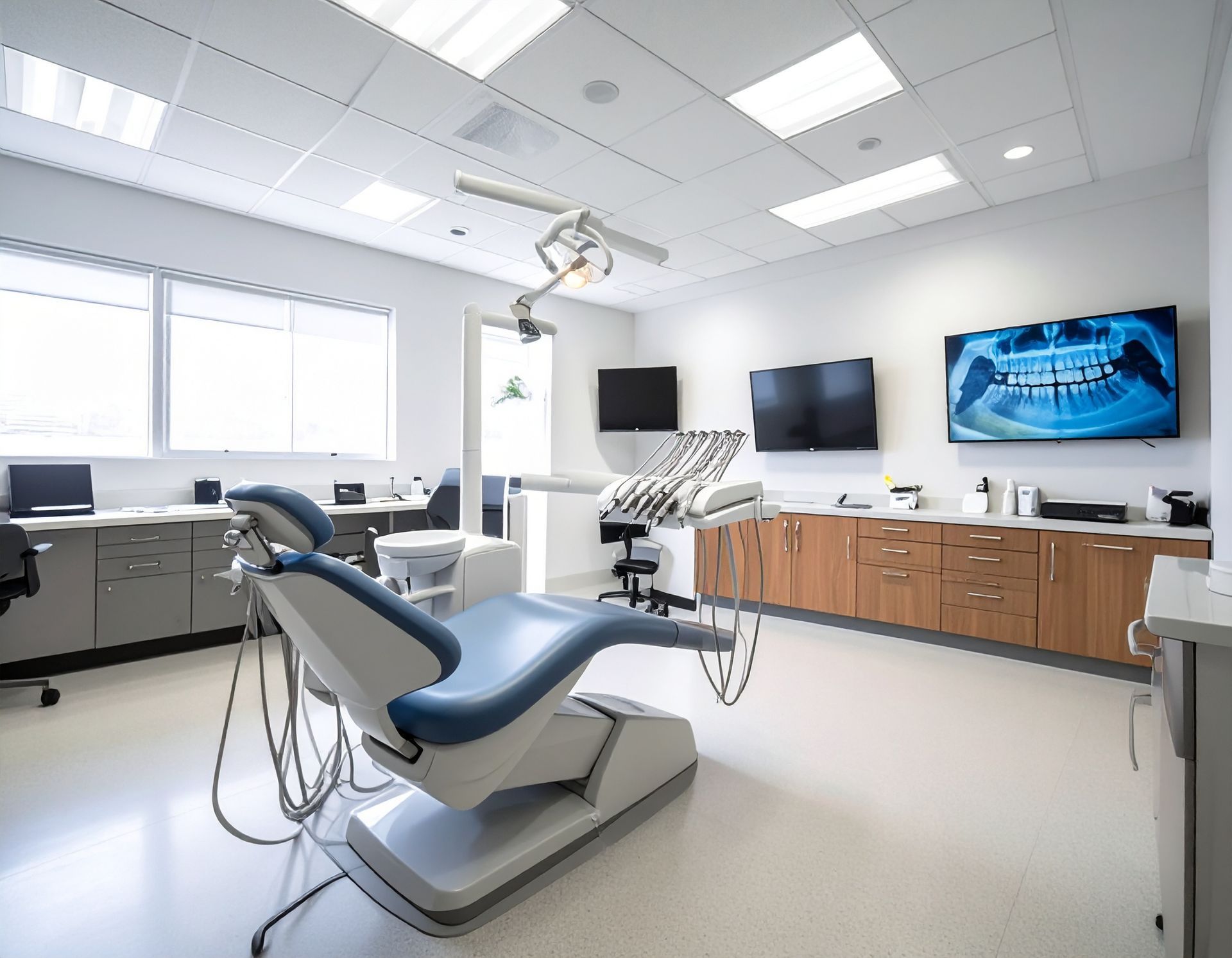How Dentist Offices Can Make Their IT Infrastructure HIPAA Compliant
If you run or manage a dental practice, HIPAA compliance probably isn’t the most exciting part of your job, but it might just be the most important. One slip-up, and you’re looking at serious consequences such as hefty fines, legal trouble, or worse, broken trust with your patients.
The Health Insurance Portability and Accountability Act (HIPAA) establishes strict guidelines to ensure the privacy, integrity, and availability of Protected Health Information (PHI). For dental practices, this means that your IT infrastructure must not only support clinical operations but also comply with federal privacy and security mandates.
What Is the Health Insurance Portability and Accountability Act (HIPAA)?
The Health Insurance Portability and Accountability Act (HIPAA) is a federal law enacted in 1996 in the United States to protect sensitive patient health information from being disclosed without the patient’s knowledge or consent.
HIPAA is overseen by the U.S. Department of Health and Human Services (HHS) and has several key goals:
- Improve portability of health insurance coverage between jobs.
- Reduce healthcare fraud and abuse.
- Simplify the administration of healthcare through standardized electronic data exchange.
- Most notably for dental practices and healthcare providers: Ensure the privacy and security of Protected Health Information (PHI).
Why HIPAA Is Important to Dental Practices
Violating HIPAA can result in:
- Hefty fines: Up to $1.5 million per violation per year
- Legal action and lawsuits
- Loss of patient trust
- Damage to your reputation
Even unintentional breaches, such as a stolen laptop, improper disposal of records, or unsecured email, can lead to penalties if safeguards are not in place.
Allierad IT specializes in helping dental offices modernize and secure their IT environments. Here’s an in-depth, step-by-step guide to making your dental practice’s IT infrastructure fully HIPAA compliant.
1. Conduct a thorough HIPAA Assessment
Every HIPAA-compliant IT strategy begins with a thorough risk analysis. This means:
HIPAA requires regular security risk assessments, not just once, but anytime you:
- Add new hardware or software
- Hire or offboard employees
- Change how you store or transmit PHI
You’ll need to document where PHI is:
- Stored (on servers, in the cloud, on devices)
- Accessed (who’s logging in, when, and from where)
- Transmitted (email, messaging apps, file sharing)
You are required by HIPAA to perform
risk assessments regularly, not just once. If your office adds new equipment or software, or if there is a staff change, you’ll need to reassess risks accordingly. Document everything. Risk assessments must be documented to demonstrate compliance in the event of an audit.
2. From here, implement technical safeguards: Encryption and access controls
HIPAA’s Security Rule mandates technical safeguards to protect electronic PHI (ePHI).
Encrypt everything: All data at rest (stored) and in transit (being sent) should use industry-standard encryption like AES-256.
Use MFA (Multi-Factor Authentication): Passwords alone aren’t enough anymore.
Limit access: Role-based permissions ensure staff only see what they need.
Track everything: Audit logs are your best defense in an investigation.
3. Strengthen physical security measures
While most HIPAA discussions focus on digital safeguards, physical security is equally important:
- Secure on-premises servers in locked, access-controlled rooms.
- Restrict access to computers and devices storing or accessing PHI.
- Use
screen privacy filters, automatic screen lockouts, and secure storage for physical records.
4. Use HIPAA-Compliant software and cloud services
Not all practice management software or cloud vendors are HIPAA-compliant. Ensure all digital tools meet the following criteria:
- Vendors must be willing to sign a Business Associate Agreement (BAA).
- The software must offer built-in encryption, audit logging, and user access control.
- Cloud services must guarantee data redundancy, disaster recovery, and physical data center security.
Examples of HIPAA-compliant dental platforms: Dentrix Enterprise, Curve Dental, Open Dental with proper security configurations.
5. Backup data securely and have a disaster recovery plan
HIPAA requires that you have a Data Backup Plan and a Disaster Recovery Plan as part of your administrative safeguards.
Your plan should include:
- Automated, daily encrypted backups (both onsite and offsite/cloud).
- Redundancy, so that if one system fails, another takes over seamlessly.
- Regular testing of backup recovery processes.
- A documented
contingency operations plan for emergency access to ePHI.
6. Monitor and patch systems regularly
Outdated software can be a backdoor for cybercriminals. Maintain a proactive strategy that includes:
- Regular updates and security patching of operating systems, antivirus tools, firewalls, and practice management software.
- Intrusion detection systems (IDS) to monitor suspicious activity.
- Endpoint protection to defend every device connected to your network.
7. Ensure secure communications
All digital communications that involve PHI—whether internal (between staff) or external (with patients, labs, or partners)—must be encrypted and secure.
- Use secure email portals with end-to-end encryption.
- Provide patients with HIPAA-compliant messaging systems for appointment reminders, test results, and billing.
- Never use consumer-grade platforms (e.g., Gmail, Slack, or iMessage) for PHI unless configured with HIPAA-compliant layers.
8. Train your staff regularly on HIPAA Policies
Human error is one of the leading causes of HIPAA violations. You are required to train your workforce on:
- Recognizing phishing and social engineering attacks.
- Proper handling and disposal of PHI.
- Use of secure passwords and MFA.
- What to do in the event of a data breach.
Training should occur
annually at minimum, and be updated whenever policies or technologies change.
9. Review Business Associate Agreements (BAAs)
Any third-party vendor that has access to PHI, such as your IT provider, cloud host, EHR software, or billing company, must sign a Business Associate Agreement that outlines their responsibility to protect PHI under HIPAA.
Keep copies of all signed BAAs in a centralized, secured location and
review them annually.
10. Establish a breach notification policy
HIPAA requires that any breach involving PHI be reported within 60 days of discovery. Your breach response plan should:
- Include immediate notification procedures for internal staff and business associates.
- Designate a HIPAA Privacy Officer responsible for documentation and reporting.
- Provide protocols for notifying patients and the Department of Health and Human Services (HHS).
Documenting your breach response in advance can limit your liability and prevent regulatory penalties.
How Allierad IT Helps Dental Practices Stay HIPAA-Compliant
Doing all of this alone is overwhelming. At Allierad IT, we specialize in helping dental practices like yours build secure, HIPAA-compliant environments without the stress on your part. We specialize in securing healthcare and dental IT environments. Our services include:
- End-to-end risk assessments
- Secure, HIPAA-compliant network design
- Staff training and ongoing support
- 24/7 remote monitoring and patch management
- Data backup and recovery planning
- Secure cloud migrations
- Vendor BAA management
We partner with you to build a
compliance-first IT environment that scales with your dental practice.
Allierad IT vs. doing your own audits
| Category | With Allierad IT | Doing It On Your Own |
|---|---|---|
| Risk Management | Expert-led assessments & documentation | Incomplete or outdated reviews |
| Security & Encryption | Full data encryption, MFA, and access controls | Basic setups, potential vulnerabilities |
| Staff Training | Ongoing, role-specific HIPAA training | Infrequent, generic training |
| Data Backup | Automated, encrypted, and tested | Manual or unreliable processes |
| Audit Readiness | Documentation organized and up to date | Gaps that could lead to fines |
The Bottomline
Becoming HIPAA-compliant should be a proactive process that demands attention to detail and a deep understanding of security protocols. Dental practices that proactively invest in secure IT systems and training not only protect patient privacy but also avoid costly fines, build trust with patients, and ensure operational continuity. Go beyond the bare minimum and build a secure IT foundation that grows with your practice.
Let Allierad IT help you build and maintain a HIPAA-compliant IT infrastructure you can trust.
Contact us today for a free HIPAA IT readiness consultation!






